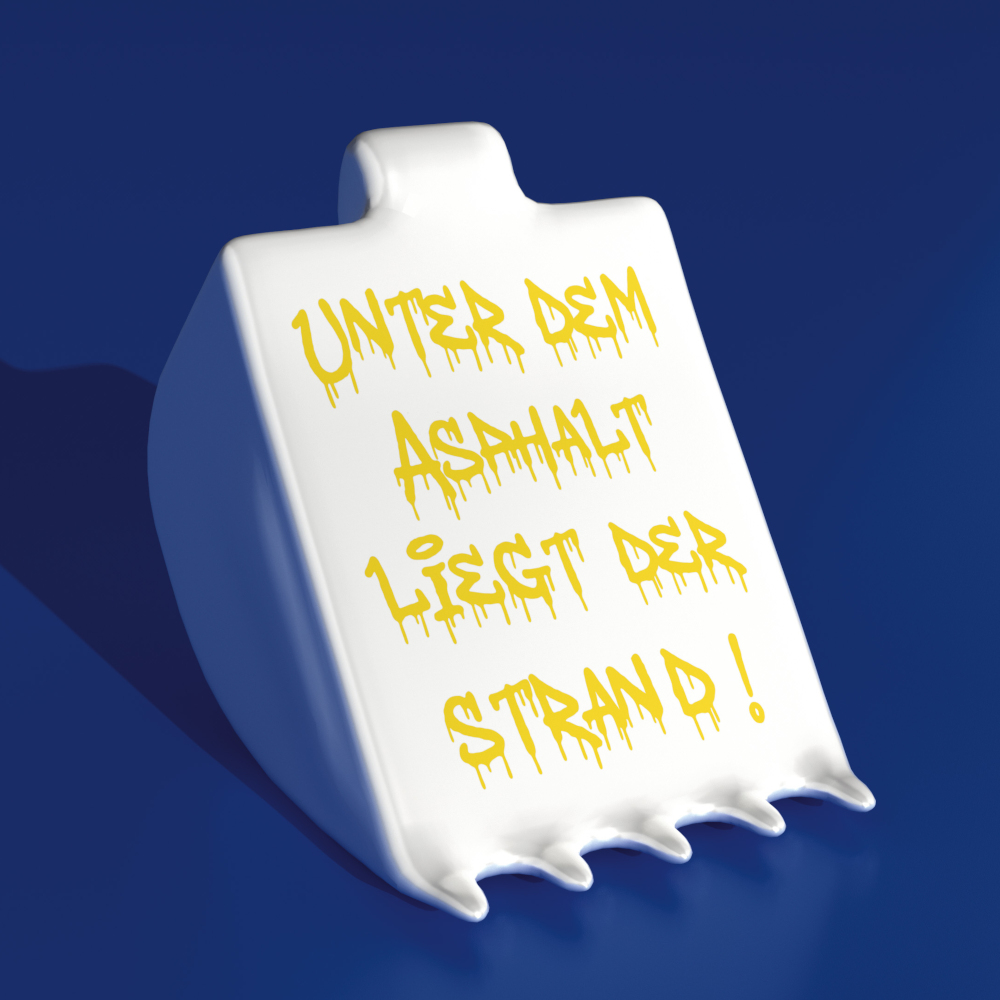The word “protest” comes from the Latin “protestari,” meaning “to publicly bear witness.” The Pavilion against Indifference alludes to well-known protest architectures and reinterprets them with new materials and forms. This recontextualization enables reflection on and renegotiation of protest, activism, and political participation.
Enclosed by a transparent, flowing voile curtain, the performance and workshop area forms the center of the spatial design. By opening and closing the curtain, artists and workshop participants can flexibly adapt the space to their needs. A tiered seating structure extends this area—serving as a stage, a gathering place, and a space for dialogue and exchange.
Two smaller areas at the ends of the pavilion house interactive elements. An excavator wrapped in white plastic becomes a totem of seemingly uncontrollable transformation. In front of it, objects, mementos, and protest symbols can be attached. On the opposite side, long sheets of paper are suspended. They cut vertically through the tall space and stretch out like a canopy above. The sheets can be painted and moved using a crank—gradually filling the structure with messages and colors.
In a space of exchange, reflection, and collective action—open, permeable, and in constant transformation—indifference and apathy give way to a shared force: solidarity and empathy.


